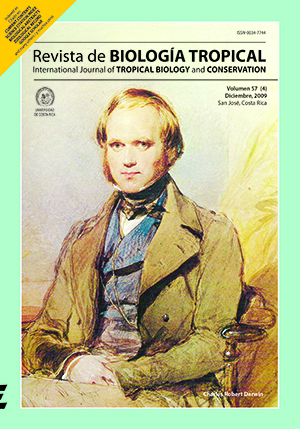Resumen
Los actinomicetos son importantes en la sostenibilidad de sistemas naturales. Su diversidad fue evaluada en suelos de bosque, pastizal y rastrojo, y dos profundidades en el Sur del Trapecio Amazónico Colombiano. Se analizaron suelos de cinco repeticiones por cobertura para un total de 15 unidades. Se tomaron seis muestras en cada unidad y dos profundidades, para un total de 30. Los actinomicetos cultivables se determinaron por recuento en placa, se extrajo ADN, se amplificó el gen ADNr 16s y su diversidad genética se estimó por ARDRA. Hubo diferencias de abundancia entre coberturas y profundidades, relacionadas con la vegetación, presencia de lombrices, macrofauna, altos niveles de materia orgánica, y bases totales. Se obtuvieron valores de diversidad fenotípica similares para las tres coberturas, pero los bosques son más diversos. Se identificaron 16 morfotipos, agrupados en séis géneros, siendo Streptomyces el más abundante. La heterogeneidad de los patrones ARDRA no permitió la asignación de especies, reflejándose variaciones en las secuencias de diferentes operones ADNr 16s en un mismo organismo. Las perturbaciones en la cobertura influyen sobre los actinomicetos, generando cambios en su abundancia y diversidad. Su importancia ecológica permite proponerlos como indicadores biológicos de alteración del paisaje.##plugins.facebook.comentarios##

Esta obra está bajo una licencia internacional Creative Commons Atribución 4.0.
Derechos de autor 2009 Revista de Biología Tropical
Descargas
Los datos de descargas todavía no están disponibles.






